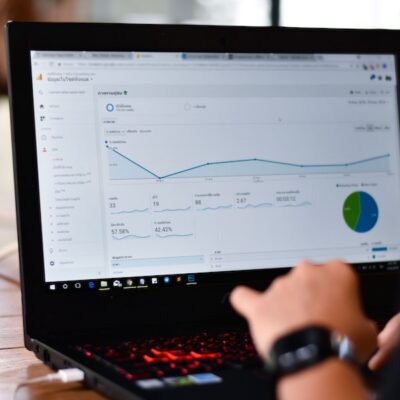This article was first published on July 13th, 2020, and was last updated January 2022.
Every year, Google handles over 40,000 searches every second. With billions of humans using the internet, what we search for and how we search on search engines continuously shifts and evolves. To keep up, Google also needs to evolve. The best way for search engines such as Google to be a part of this evolution is by rolling out algorithms to match the world’s ever-changing demands.
Contrary to some commonly held beliefs, Google rolls out hundreds of updates each year. In 2018 alone, they reported 3,234 updates. While many of these updates were minor, Google occasionally releases major algorithm updates that significantly affect search results and how we do SEO.
Here is a high level explanation of Google’s most impactful or ‘named’ updates and how they changed SEO:
What is a Google Algorithm Update?
Google Search has one simple goal—deliver the best user experience possible. They provide exemplary service by consistently tweaking and refining how they find, rank, and answer queries. The best way they do this is by performing and rolling out algorithm updates. An algorithm update’s main purpose is making a change to Google’s search engine to help improve user experience as a whole. Obviously you can’t fix everything with one update. That’s why Google rolls out thousands of algorithm updates when it needs to be added.
Why Do Updates Happen?
If you look at all of Google’s algorithm updates, there is a crystal-clear purpose for each one. Every update is centered on improving the user experience and helping searchers find the information they’re seeking quickly and easily. Google is the #1 search engine in the world and they got there because of their focus on the user experience. Algorithm updates happen to try to improve the user’s search experience and make it as easy as possible. Without updates, there’s no room to grow or face future issues that could make a huge difference to individuals trying to rank online.
What Is A Google Core Update?
A Google core update is an update that has an important impact on search results. It specifically impacts multiple types of websites in different industries and platforms. These updates are mainly designed to improve the quality and relevance of indexed web pages.
Timeline of Google Algorithm Updates
This timeline of algorithm updates goes through most of the major Google algorithm updates, their major impacts, and what they did for SEO. Let’s get started:
2021
Page Experience Update (June 25th, 2021)
This update included Core Web Vitals and impacted both organic and News results in SERPs. While these weren’t new metrics, they were updated to be newly prioritized factors to quantify a person’s experience on a webpage.
Product Reviews Update (April 8th, 2021)
This update was to reward in-depth reviews over shorter reviews as well as spam. Having reviews that provided more in-depth information and quality insight helped improve the credibility of your site. The more Google trusts your website, the higher you could rank in SERPs.
Passage Ranking (February 10th, 2021)
This ranking was for US/English search queries that used artificial intelligence to index web pages and individual passages within those pages. This meant specific words and paragraphs could show up in a featured snippet. This update helped give specific answers from trusted websites to specific questions in SERPs.
2020
December Core Update (December 3rd, 2020)
This update focused on content interpretation and SERP features. While this core update didn’t make the biggest impact towards websites, those who were affected could see significant changes. Those impacted were mainly reference and news sites where SERP features became more prominent.
May Core Update (May 4th, 2020)
It focuses mainly on content quality and appears to impact larger websites the most. SEMRush data shows the industries most impacted were travel, real estate, health, pets & animals, and people & society. It weighed more heavily on E-A-T factors.
January Core Update (January 13th, 2020)
Google recommends users use Expertise, Authoritativeness, and Trustworthiness (E-A-T) when creating content for their websites. Content aligning with these objectives are prioritized by Google and sites that follow this acronym have a better chance to rank higher. This update was also an extension by penalizing sites with low credibility in YMYL categories.
2019
BERT (October 22nd, 2019)
Bidirectional Encoder Representations from Transformers, or BERT as we like to call it, is grounded in natural language processing and is used to better understand the context and nuance of a query. Google said, “These improvements are oriented around improving language understanding, particularly for more natural language/conversational queries (…) You can search in a way that feels natural for you.” While Bert’s impact was small on websites, it helped change how SEO and digital marketing creates content. When you write great content, Google will reward you for it with better rankings.
2018
Medic (August 1st, 2018)
This update was called ‘medic’ because of effects on health, medical, and other life-altering decision-based websites (also known as YMYL). It penalized these pages and websites for giving medical claims without sustaining it with credible resources. A website not having strong E-A-T or optimized SEO drops in rankings due to this update.
2017
Fred (March 8th, 2017)
According to Brightedge, Fred appeared “…to crack down on sites that emphasize display ads and/or traffic monetization widgets over content as well as making said elements difficult to differentiate from actual on-page content.”
2016
Possum (September 1st, 2016)
This update significantly impacted how results were filtered in Google’s local pack (the map-looking section of Google’s search results that list local businesses associated with your query). It helped diversify local results and prevented spam from ranking.
2015
RankBrain (October 26th, 2015)
Considered part of the Hummingbird update, RankBrain introduced artificial intelligence to Google’s arsenal. According to Moz, “RankBrain uses machine learning (the ability of machines to teach themselves from data inputs) to determine the most relevant results to search engine queries (…) it is believed that the query now goes through an interpretation model that can apply possible factors like the location of the searcher, personalization, and the words of the query to determine the searcher’s true intent. By discerning this true intent, Google can deliver more relevant results.” This update helped Google understand search intent more clearly.
Mobile-Friendly Update (April 21st, 2015)
Like the name suggests, this update revolves around mobile optimization. With more and more people searching via smartphone, this update encouraged businesses to have a mobile version of their website. When individuals improved their mobile experience, it would also improve their user experience. Along with the update, it would help websites rank higher in search engine’s eyes.
2014
Pigeon (July 24th, 2014)
This update improved Google’s distance and ranking parameters, providing more useful, relevant, and accurate local search results. This greatly improved for users and the search engine rankings for local businesses and information regarding these local businesses. It also influenced Google’s distance and location ranking parameters.
2013
Hummingbird (September 26th, 2013)
This update revolutionized the search landscape as Google’s algorithm began to better interpret searcher intent and context. This caused a shift toward long tail keywords—keywords or phrases that are more specific, and longer, than regular keywords (more like natural speech). This update changed how Google understood search queries overall and helped users find more relevant results.
2012
Penguin (April 24th, 2012)
Largely focused on backlinks, Penguin’s designed to reduce spam and encourage quality content for searchers. Google rewarded sites with quality, organic backlinks, and penalized sites that artificially boosted their rankings via link farms or other spam sites.
2011
Panda (August 12th, 2011)
Goodbye, poor SEO content. Hello, Panda. This update targeted spam and content that didn’t help the end-user. Duplicate content, thin content, and content with spammy ads were all penalized. This update seeked to improve fixing rankings by penalizing sites with repetitive content and poor user metrics.
Keeping our Clients and Partners Ranking When Google Algorithms Keep Changing
At Boostability, we have 12+ years of data and track over 2.3 million keyword rankings per month. Because we track so much data, we notice algorithm shifts as they happen and pivot our strategies accordingly. We’ve gotten so good at it that our customers haven’t been negatively impacted by a Google algorithm update since 2013. Our SEO experts constantly monitor search traffic, trends, and rankings; often spotting algorithm updates before an announcement.
We also heavily focus on the quality of our SEO. Here are a few things we keep in mind when optimizing websites for Google’s search engine results page (SERP):
- When developing content for a website, we focus on the end-user.
- We identify and prioritize keywords with the intent to buy in mind.
- We ensure our clients’ websites are easy to navigate and friendly for both desktop and mobile use.
- Boostability creates quality content that is engaging, fresh, genuine, and useful.
- We don’t focus solely on written content— we use a variety of images, videos, and infographics to engage the end-user.
And if that seems like a lot of work, let Boostability help you out!
Our partner-centric focus makes offering online marketing solutions to your clients quick and simple. Our custom white label SEO services are designed to meet your specific needs, work with your existing client database, and quickly create an additional revenue source for your business.
If you have the market, we have the white label SEO marketing platform and expertise to help you get started.










